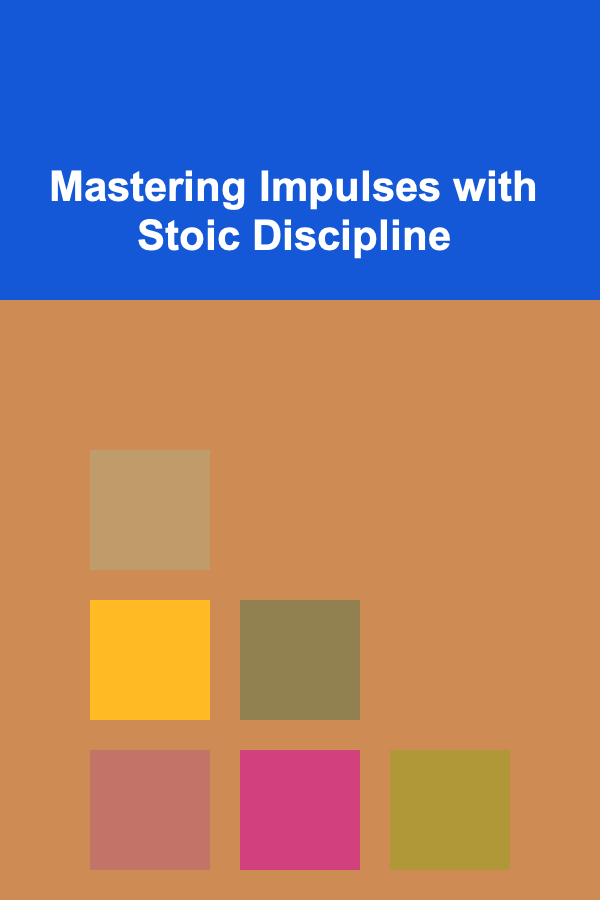
How to Integrate Mindfulness into Your Yoga Planner
ebook include PDF & Audio bundle (Micro Guide)
$12.99$9.99
Limited Time Offer! Order within the next:
Not available at this time

In recent years, yoga and mindfulness have become closely intertwined, both offering powerful tools for enhancing physical, mental, and emotional well-being. While yoga focuses on the unity of body, breath, and movement, mindfulness emphasizes awareness and presence in the moment. Together, they form a holistic practice that nurtures balance, calm, and insight.
A yoga planner is a practical tool designed to help yoga practitioners organize their routines, track progress, and set goals. Traditionally, it might include schedules, pose sequences, and notes about physical sensations or improvements. However, integrating mindfulness into a yoga planner elevates it beyond mere logistics into a personal, reflective companion---one that cultivates deeper self-awareness, intention, and growth on and off the mat.
This article will explore comprehensive strategies and actionable ideas for weaving mindfulness seamlessly into your yoga planner. By doing so, your yoga practice becomes more than physical exercise---it becomes a transformative journey toward living with greater presence, compassion, and clarity.
The Synergy of Yoga and Mindfulness
Before diving into practical integration techniques, it's crucial to understand why mindfulness and yoga complement each other so well:
- Mindfulness is the practice of present-moment awareness, observing sensations, thoughts, and emotions without judgment. It develops focus and emotional resilience.
- Yoga connects breath and movement with awareness, inviting practitioners to explore the body's boundaries and inner experience.
Together, they foster a more embodied, conscious experience of yoga. Mindfulness enriches the quality of practice, while yoga provides a moving meditation to anchor mindfulness in the body.
Setting Mindful Intentions in Your Planner
The first step to integrating mindfulness into your yoga planner is incorporating intention-setting. Intentions serve as guiding principles or focus areas that shape the energy of your practice.
How to Include Intentions:
- Daily/Session Intention Section: Reserve a space at the start of each day or practice entry to write down your intention. It could be as simple as "practice patience," "stay present in breath," or "cultivate gratitude."
- Reflect on Emotional and Physical States: Before beginning your practice, note how you feel physically and emotionally. This helps bring awareness to your starting point.
- Set Non-Performance Goals: Shift focus from achieving specific poses to internal qualities like calmness, openness, or self-compassion.
Example Intentions:
| Date | Intention | |------------|--------------------------------| | 2025-07-01 | Let go of tension in shoulders | | 2025-07-02 | Focus on breath, stay present | | 2025-07-03 | Embrace self-kindness |
Writing intentions consciously primes the mind to engage in practice with purpose rather than autopilot.
Mindful Breath Tracking
Breath awareness is fundamental to both yoga and mindfulness. Your yoga planner can include a dedicated section to record observations about your breathing pattern during practice.
Suggestions for Breath Tracking:
- Note Breath Quality: Is it deep, shallow, smooth, or ragged?
- Track Breathing Techniques: Did you practice Ujjayi breath, alternate nostril breathing, or simply natural breath?
- Record Effects: How did focusing on breath affect your body sensations or mental state?
This breath tracking encourages deeper engagement and helps you identify patterns or obstacles in your breathing practice.
Incorporate Mindfulness Prompts and Reflection Questions
Reflection is key to mindful living. Adding prompts to your yoga planner fosters introspection about your practice and life.
Examples of Mindfulness Prompts:
- What sensations arose during today's practice?
- Where did I notice tension or resistance?
- How did I respond to challenges on the mat?
- What thoughts or emotions came up, and how did I observe them?
- How can I bring this awareness into my daily life?
How to Use Prompts:
- Include prompts at the end of each session log.
- Reserve weekly or monthly pages for deeper reflections.
- Use open-ended questions that invite curiosity rather than judgment.
Journaling Space for Experiential Notes
A yoga planner that includes a journaling section enables you to capture insights, emotional shifts, or breakthrough moments from your practice.
Benefits of Journaling:
- Clarifies Internal Experience: Writing makes subtle experiences more tangible.
- Enhances Mindfulness: Journaling is a mindful act that slows down the mind.
- Tracks Progress Beyond Poses: Emotional and mental growth often goes unnoticed without reflection.
Consider dedicating space for free writing or guided prompts. You can write about how mindfulness affected your yoga session or how yoga informs your everyday awareness.
Use Visual Mindfulness Aids: Mandalas, Drawings, and Colors
Integrating creativity enhances mindfulness by engaging different parts of the brain and inviting playful presence.
Ideas for Visual Aids:
- Draw Mandalas or Patterns: These can represent your mood, energy, or intention.
- Color Code Moods or Energy Levels: Use colors to indicate how you felt during or after practice.
- Create Symbols for Mindful Moments: Develop personal icons representing calm, focus, or gratitude to mark sessions where mindfulness was strong.
Visual elements can make your yoga planner a joyful, sensory-rich tool that invites ongoing engagement.
Scheduling Mindfulness Breaks and Meditations
Yoga practice is not just asana (poses); it includes pranayama (breath control), meditation, and rest. Your planner should reflect this holistic nature.
How to Schedule:
- Include Time Slots for Meditation: Even 5--10 minutes can enhance mindfulness.
- Remind Yourself to Take Mindful Pauses: Set reminders for mindfulness breaks during the day.
- Track Duration and Quality: Note how long and how focused your meditation was.
By explicitly incorporating mindfulness practices, your planner transforms from a mere schedule to a supportive framework for overall well-being.
Gratitude Logs and Positive Affirmations
Gratitude practice fosters a positive mindset and is closely linked to mindfulness.
How to Include Gratitude:
- Daily Gratitude Section: Write 1--3 things you are grateful for related to your yoga practice or life.
- Affirmations: Create or collect affirmations that inspire mindful living, such as "I accept the present moment," or "I am patient with my journey."
Gratitude and affirmations encourage a compassionate relationship with yourself, deepening your mindfulness practice.
Tracking Energy and Emotional States Over Time
Mindfulness is about observing fluctuations in body and mind without attachment. Your yoga planner can help you map these changes.
How to Track:
- Use a simple scale (1-10) to rate your energy and emotional state before and after practice.
- Chart patterns over weeks or months to notice trends.
- Reflect on external factors influencing your states, such as sleep, stress, or nutrition.
This awareness promotes a balanced approach to practice, adjusting intensity and focus based on internal needs.
Creating a Mindful Space for Goal Setting
While yoga is not goal-oriented in a conventional sense, setting mindful goals encourages steady growth with compassion.
Mindful Goal Ideas:
- Increase presence during practice.
- Cultivate non-judgmental awareness of the body.
- Improve breath control with patience.
- Integrate mindfulness off the mat, such as during meals or walking.
Record these goals in your planner alongside gentle reminders to revisit and revise them with self-compassion.
Integrating Mindful Movement Beyond the Mat
Mindfulness can extend into daily life through mindful movement practices such as walking meditation, stretching breaks, or conscious breathing during routine activities.
How to Plan:
- Add sections to your planner for mindful movement practices outside formal yoga sessions.
- Track frequency and quality.
- Reflect on how these practices influence your mood and mental clarity.
This reinforces mindfulness as a lifestyle rather than a compartmentalized activity.
Using Technology Mindfully Alongside Your Planner
Many practitioners use digital planners or apps to complement physical planners.
Suggestions for Mindful Tech Use:
- Use reminder apps with gentle, non-intrusive notifications for mindfulness breaks.
- Record voice notes about your practice reflections if writing feels cumbersome.
- Use apps that promote mindfulness, such as guided meditations or breathwork timers, integrated into your planner schedule.
Balancing analog and digital tools can optimize mindfulness integration.
Sample Weekly Mindfulness Yoga Planner Layout
Here's a sample layout you might adopt or adapt for your yoga planner:
| Day | Intention | Poses/Sequence | Breath Notes | Mindfulness Reflection | Energy (1-10) | Gratitude/ Affirmation | |---------|-------------------------------|----------------------|------------------|---------------------------------------------|---------------|--------------------------------| | Monday | Stay present, release tension | Sun Salutations, etc | Smooth, steady | Noticed tightness in hips, stayed patient | 7 | Grateful for calm morning | | Tuesday | Embrace challenge | Balance Poses | Shallow, focused | Felt frustration, observed without judgment | 6 | Affirm: "I grow with patience" | | ... | ... | ... | ... | ... | ... | ... |
Conclusion
Integrating mindfulness into your yoga planner transforms it into a powerful tool for holistic growth---physically, mentally, and emotionally. By consciously setting intentions, tracking breath and energy, reflecting on experiences, and incorporating gratitude and mindful movement, you create a rich tapestry of self-awareness that extends beyond the mat into everyday life.
This approach encourages you to slow down, observe without judgment, and embrace your practice as a living, evolving journey. Whether you are a beginner or an experienced yogi, using a mindfulness-infused planner deepens your connection to yourself and your practice, fostering lasting well-being and inner peace.
If you want, I can also help create printable templates or digital planner designs tailored for mindful yoga practice. Would you like that?

How to Build a Grant Reporting Checklist for Social Services Grants
Read More
How to Create a Cozy Holiday Atmosphere on a Budget
Read More
How to Manage Student Loans and Pay Them Off Quickly
Read More
How to Use Technology to Enhance Team Collaboration
Read More
How to Use Under-Sink Storage for Kitchen and Bath
Read More
Mastering Impulses with Stoic Discipline
Read MoreOther Products

How to Build a Grant Reporting Checklist for Social Services Grants
Read More
How to Create a Cozy Holiday Atmosphere on a Budget
Read More
How to Manage Student Loans and Pay Them Off Quickly
Read More
How to Use Technology to Enhance Team Collaboration
Read More
How to Use Under-Sink Storage for Kitchen and Bath
Read More